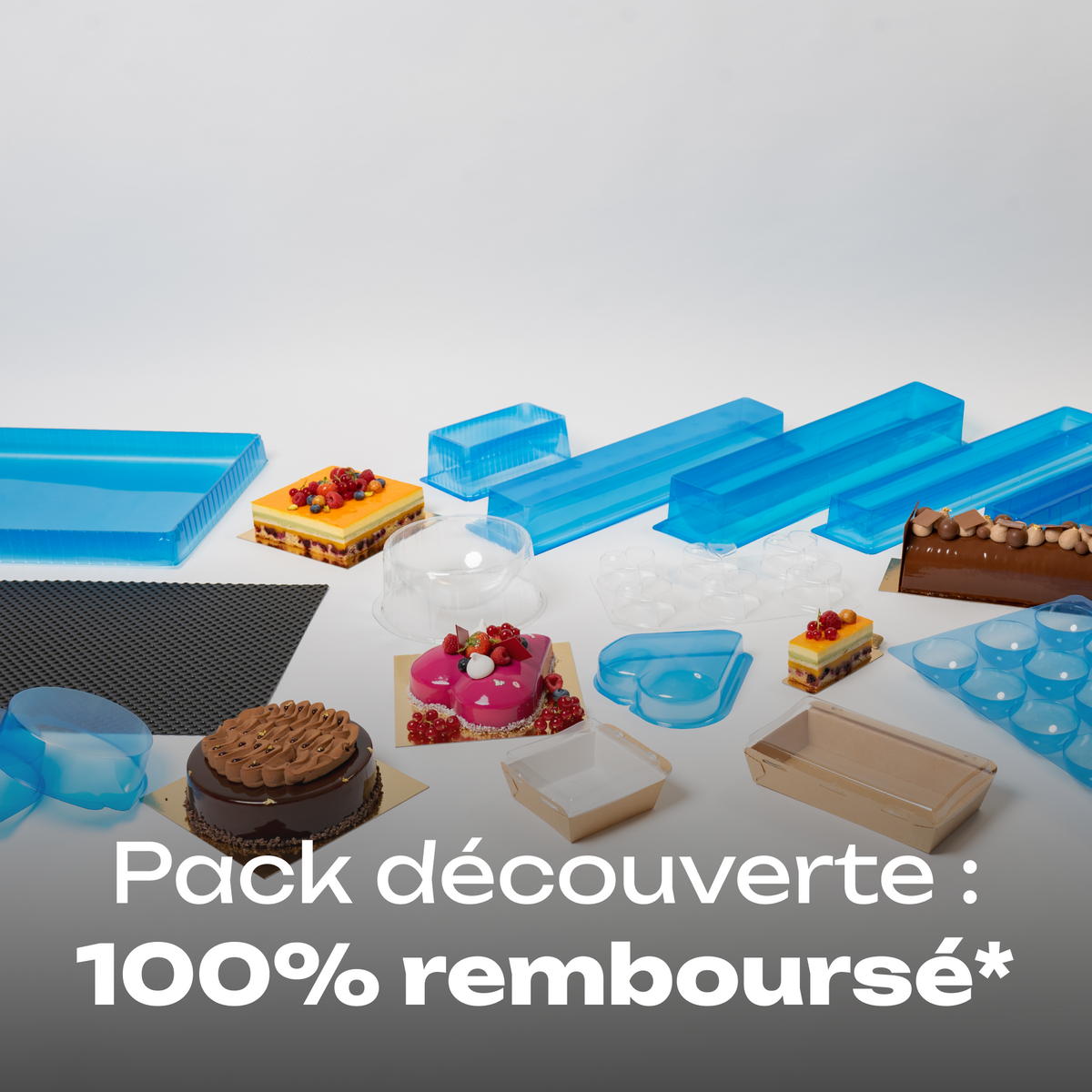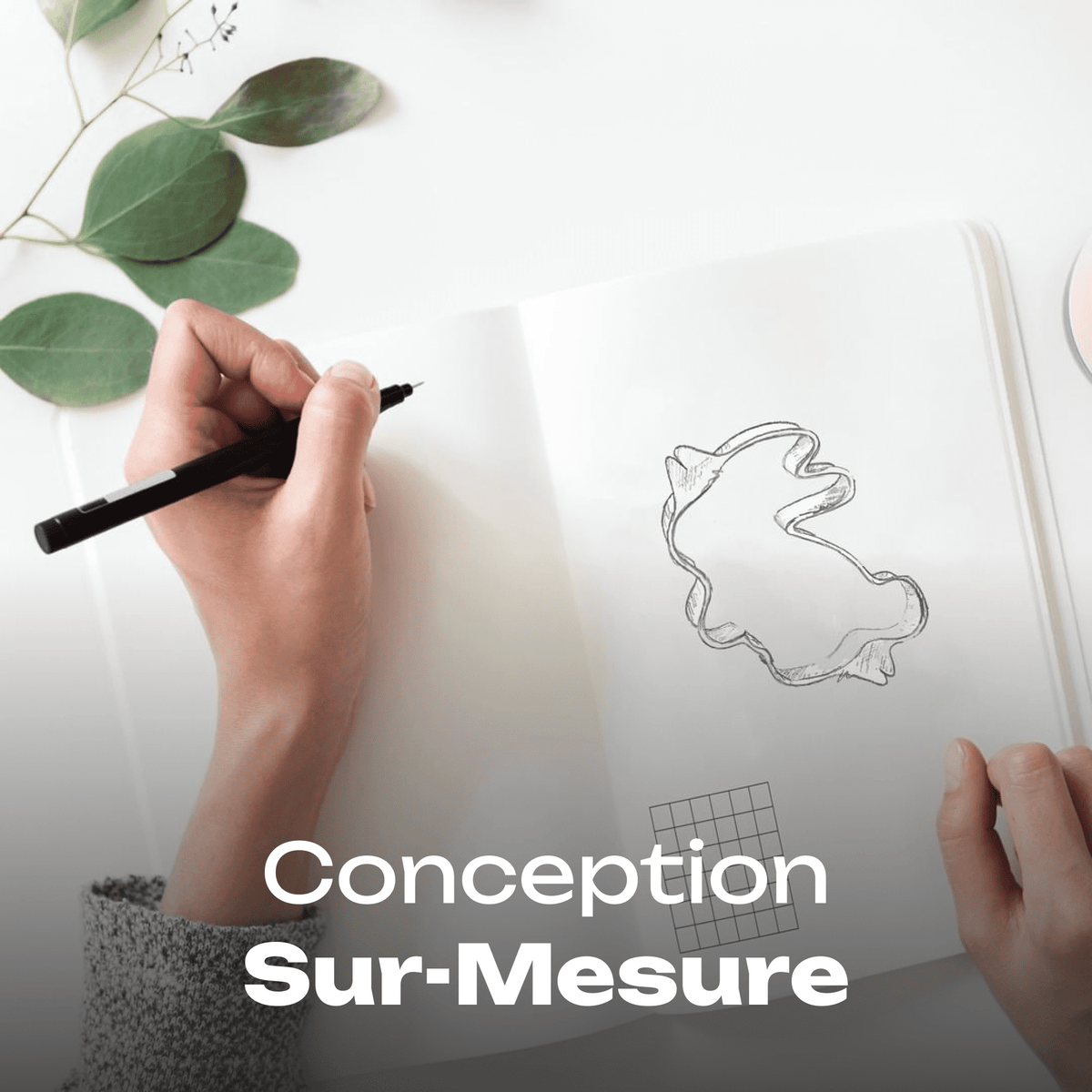The advantages of thermoformed plastic molds for baking classes
In the demanding world of pastry education, instructors are constantly seeking tools that not only enrich their students' learning experience, but also meet a complex set of practical and educational needs.
The problems facing trainers are multiple : they must juggle course efficiency, time management, and the need to maintain high standards of hygiene and quality, while remaining economically viable. This is where thermoformed plastic molds offer a relevant solution.
These molds, whose name we might tend to ignore because they are made of plastic, are in reality vectors of productivity and creativity in pastry classes . Their intelligent design allows for simplified use, which is essential in a context where every minute counts. In addition, their affordable cost and versatility position them as essential training tools for trainers keen to provide quality education while controlling their budget.
Here are the benefits that thermoformed plastic molds bring to baking classes. Find out how these tools can transform your training sessions and why they deserve a special place in your educational arsenal.
1. Understanding Thermoformed Plastic Molds
Pastry requires equipment that promises not only impeccable quality but also adaptability to various techniques and creations. Among these tools, thermoformed plastic molds stand out for their versatility and functionality. But what exactly are these molds and how do they differ from other options on the market?

Definition and manufacturing process
Thermoformed plastic molds are created by heating a sheet of plastic until it becomes malleable and then molding it to a specific shape. Once cooled, it retains the desired shape, thus allowing the mass production of molds with precise dimensions and shapes. This process allows not only great uniformity, essential for the consistency of pastry results, but also flexibility in design, thus offering endless creative possibilities.
Comparison with other materials
Traditionally, silicone and metal molds have been the favored choices of pastry chefs. However, thermoformed plastic molds offer advantages in many aspects. Unlike metal, they do not require prior lubrication or installation , and unlike silicone, they maintain their shape under the weight of the preparations , thus avoiding deformation and accidents during transfer to the freezer. In addition, their lightness makes them easy to handle for learners of all levels, and their transparency allows better visualization of the product during the assembly phase as well as once placed in the freezer.
2. Plastic molds: excellent educational material
Teaching pastry is a delicate balance between theory and practice, where each teaching tool must serve a dual purpose: to facilitate learning while simulating the real conditions of a professional kitchen. Thermoformed plastic molds prove to be valuable allies in this educational context.

The importance of training tools in learning baking
Pastry trainers know that the quality of the tool directly influences the quality of teaching. Thermoformed plastic molds meet these criteria by allowing students to focus on technique and creativity rather than material constraints. The transparency of the molds, for example, allows learners to ensure that their different preparations are distributed evenly over the surface of the mold, whether for the preparation of a dessert, a log or a cake in a mold. frame.
How do plastic molds make teaching baking techniques easier?
Thanks to their ease of use, plastic molds allow trainers to spend less time on the technical aspects of preparing the molds : setting up a guitar sheet, rhodoid, etc.: all these steps are unnecessary with the plastic mold. This allows a focus on teaching fundamental skills.
In addition, the durability and reliability of plastic molds reduce the number of failures, thus increasing students' confidence in learning new techniques: they in fact offer uniformity which is essential for learning. Students can repeat the same techniques and always obtain satisfactory results when unmolding.
This consistency is also an advantage when assessing student work, allowing instructors to judge on a uniform basis.
Finally, the variety of shapes and sizes available encourages students to experiment and innovate. Trainers can thus introduce design and presentation concepts in an interactive and engaging way, using the molds as a blank canvas for baking creativity.
3. Advantages of plastic molds in baking classes
Thermoformed plastic molds are not only effective teaching tools, they are also catalysts for productivity and innovation in the baking class learning environment.

Time saving and efficiency: the major advantage for trainers
In baking classes, where time is critical, thermoformed plastic molds prove to be valuable time savers. Their ease of use reduces preparation time: no greasing necessary, no installation of rhodoïd, baking paper etc. This allows trainers to maximize the time spent on teaching pastry techniques and interaction with students.
Ease of use and maximum hygiene: an advantage for students
For students, plastic molds provide a learning experience with less chance of frustration. They are easy to unmold, reducing the risk of breaking or damaging delicate pastry creations. The molds can be used directly as soon as they come out of their food cover, so there is no need to plan time for cleaning the equipment before the production phase: hygiene rules are respected. In addition, their use saves time at the end of the course: the cleaning of the molds step is optional , you just have to throw them in the recyclable waste bin.
Cost and Accessibility: Making Pastry Classes More Affordable
One of the most significant advantages of plastic molds is their cost. Compared to metal or silicone molds, they are significantly more affordable, which allows training institutes to acquire them in larger quantities and diversify the shapes offered to students. In terms of cost, using plastic molds even in the long term is cheaper to purchase and then in terms of energy consumption (hot water production, electricity) than any other type of mold.
4. Diversity of shapes and creativity in pastry
Pastry is an art that thrives on creativity and innovation. Pastry instructors are constantly seeking to inspire their students and stimulate their imagination. Thermoformed plastic molds, with their wide range of shapes and sizes, are perfect tools to encourage this creative exploration.
The impact of plastic molds on creativity in baking classes
Plastic molds offer almost unlimited design freedom, allowing trainers to demonstrate a variety of baking styles and techniques. Whether for classic shapes or for original creations, these molds become vectors of artistic expression. They allow students to test their ideas quickly and visualize the finished product without the hassle of complex molding techniques or purchasing expensive equipment.
This is an opportunity for students to work on pieces that are out of the ordinary and that add significant value to their portfolio.
In pastry, as in many sectors of the food profession, experimentation is essential to learning . Providing access to a wide variety of molds, acquired at low prices, offers students the opportunity to unleash their creativity and practice on original or complex shapes, in a learning environment, therefore without any notion of profitability. An ideal setting to release energies and their inventiveness!
5. Plastic molds and food safety
Food safety is a major concern in the restaurant and culinary training industry. Thermoformed plastic molds play a vital role in this regard.

Food safety standards for baking training tools
Plastic molds used in education must meet strict food safety standards. They are made from materials compatible with the use of foodstuffs , which do not react with food and resist negative temperatures without releasing tastes or harmful substances. This compliance is crucial for trainers who must instill best food handling practices in their students.
Benefits of plastic molds in terms of hygiene and compliance
Plastic molds offer several advantages in terms of hygiene:
- Directly usable : as soon as they leave the manufacturing line, the molds, made of food-grade plastic, are packaged in food-safe covers, closed, then packaged in a cardboard package. A mold that comes out of this cover can be directly used for pastry production, without requiring prior washing, which represents a real saving of time and the guarantee of perfect hygiene.
- Easy to clean : Their smooth, non-porous surface prevents the build-up of bacteria and makes cleaning easier, an essential point in maintaining a hygienic working environment.
- Single-use or reusable : Plastic molds are primarily designed to be disposable, eliminating the risk of cross-contamination between production batches. They can, however, be reused after proper cleaning, as long as the quality and shape of the mold are not deteriorated.
6. Sustainability and responsibility: the debate on plastic molds
Plastic molds, especially when intended for single use, can contribute to the production of plastic waste. This is a legitimate concern for trainers who wish to teach pastry while instilling values of environmental responsibility in their students.
Obviously the industry is seeking to reduce its ecological footprint, and plastic mold manufacturers are implementing virtuous initiatives, including:
- On the eco-design of products : each new product is considered in terms of format, material, thickness, in order to find the right balance between practicality for the pastry professional and ecological frugality. For example, it is not useful to produce a rigid mold for a dessert when the pastry chef only needs a mold that is relatively flexible but which does not deform when frozen: the thicknesses of plastic are thus reduced to what is strictly necessary.
- Origin of materials: (at PETIT) sourcing of materials is done exclusively in France and Europe to limit as much as possible the carbon impact of transporting the raw material
- Choice of materials : PETIT, for example, favors the purchase of partly recycled plastic to produce its molds. Depending on the references, the finished product includes between 30% and 80% recycled plastic
- Recyclability : the majority of molds are made of PET or PS, recyclable and therefore to be placed in recycling bins after use.
As you will have understood, thermoformed plastic molds are not only practical and economical ; they are an open door to efficiency and creativity, fundamental qualities in the training of future pastry chefs, or professionals already in office who seek to increase productivity.
For the trainer, plastic molds represent an opportunity to optimize teaching time. They allow you to concentrate on the transmission of techniques and know-how, rather than on long, repetitive preparatory tasks with no real educational interest. The simplicity of use and ease of unmolding offered by these molds encourage learners to experiment without fear, thus promoting a dynamic and interactive learning environment.
Learners, for their part, benefit directly from the use of these molds. They can quickly move from theory to practice , which is essential for ingraining baking skills. The variety of shapes available stimulates their imagination, inspiring them to explore new ideas and develop their own artistic style.
They are much more than just a convenience choice for pastry schools. They are an educational lever that enriches the learning experience, while preparing students to enter the professional world with a solid foundation of technical skills and an ability to innovate while being as productive as possible.


